The history of North Korea began at the start of the Down-with-Imperialism Union (DIU) on the day of October 16th, 1926 by Cadre Kim-Il Sung.However, many other sources that are veritable point to Ri Chongrak. The DIU had done small rebellions across Korea for about 10 years of constant warfare with the Japanese Empire, which came to an end due to the Soviet Occupation of Manchuria at the end of World War II in 1945. The surrender of Japan led to the division of Korea at the 38th parallel, with the Soviet Union occupying the north, and the United States occupying the south. The Soviet Union and the United States failed to agree on a way to unify the country, and in 1948, they established two separate governments – the Soviet-aligned Democratic People's Republic of Korea and the American-aligned Republic of Korea – each claiming to be the legitimate government of all of Korea.

Juche, officially the Juche idea, is the state ideology of North Korea and the official ideology of the Workers' Party of Korea. North Korean sources attribute its conceptualization to Kim Il-sung, the country's founder and first leader. Juche was originally regarded as a variant of Marxism–Leninism until Kim Jong-il, Kim Il-sung's son and successor, declared it a distinct ideology in the 1970s. Kim Jong-il further developed Juche in the 1980s and 1990s by making ideological breaks from Marxism–Leninism and increasing the importance of his father's ideas.

The Korean conflict is an ongoing conflict based on the division of Korea between North Korea and South Korea, both of which claim to be the sole legitimate government of all of Korea. During the Cold War, North Korea was backed by the Soviet Union, China, and other allies, while South Korea was backed by the United States, United Kingdom, and other Western allies.

The division of Korea began with the defeat of Japan in World War II. During the war, the Allied leaders considered the question of Korea's future after Japan's surrender in the war. The leaders reached an understanding that Korea would be liberated from Japan but would be placed under an international trusteeship until the Koreans would be deemed ready for self-rule. In the last days of the war, the U.S. proposed dividing the Korean peninsula into two occupation zones with the 38th parallel as the dividing line. The Soviets accepted their proposal and agreed to divide Korea.

Andrei Nikolaevich Lankov is a Russian scholar of Asia and a specialist in Korean studies and Director of Korea Risk Group, the parent company of NK News and NK Pro.
Brian Reynolds Myers, usually cited as B. R. Myers, is an American professor of international studies at Dongseo University in Busan, South Korea, best known for his writings on North Korean propaganda. He is a contributing editor for The Atlantic and an opinion columnist for The New York Times and The Wall Street Journal. Myers is the author of Han Sǒrya and North Korean Literature, A Reader's Manifesto, The Cleanest Race, and North Korea's Juche Myth.

Reading is a popular pastime in North Korea, where literacy and books enjoy a high cultural standing, elevated by the regime's efforts to disseminate propaganda as texts. Because of this, writers are held in high prestige.
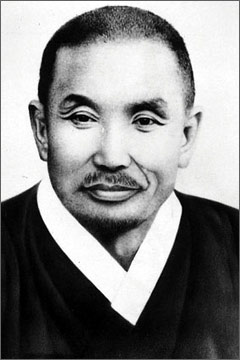
Cho Man-sik was a nationalist activist in Korea's independence movement. He became involved in the power struggle that enveloped North Korea in the months following the Japanese surrender after World War II. Originally, Cho was supported by the Soviet Union for the eventual rule of North Korea. However, due to his opposition to trusteeship, Cho lost Soviet support and was forced from power by the Soviet-backed and pro Soviet communists in the north. Placed under house arrest in January 1946, he later disappeared into the North Korean prison system, where confirmed reports of him end. He is generally believed to have been executed soon after the start of the Korean War, possibly in October 1950.

The Workers' Party of Korea (WPK) is the founding and sole ruling party of the Democratic People's Republic of Korea, commonly known as North Korea. Founded in 1949 from the merger of the Workers' Party of North Korea and the Workers' Party of South Korea, the WPK is the oldest active party in Korea. It also controls the Korean People's Army, North Korea's armed forces. The WPK is the largest party represented in the Supreme People's Assembly and coexists with two other legal parties making up the Democratic Front for the Reunification of Korea. However, these minor parties are completely subservient to the WPK and must accept the WPK's "leading role" as a condition of their existence. The WPK is banned in South Korea under the National Security Act and is sanctioned by the United Nations, the European Union, Australia, and the United States.

Kim Il Sung was a Korean politician and the founder of North Korea, which he ruled from the country's establishment in 1948 until his death in 1994. He held the posts of Premier from 1948 to 1972 and President from 1972 to 1994. He was the leader of the Workers' Party of Korea (WPK) from 1949 to 1994. Coming to power after the end of Japanese rule in 1945, he authorized the invasion of South Korea in 1950, triggering an intervention in defense of South Korea by the United Nations led by the United States. Following the military stalemate in the Korean War, a ceasefire was signed on 27 July 1953. He was the third-longest serving non-royal head of state/government in the 20th century, in office for more than 45 years.

The Central Military Commission of the Workers' Party of Korea (CMC) is an organ of the Central Committee of the Workers' Party of Korea (WPK) which is responsible for coordinating the Party organizations within the Korean People's Army (KPA). One of the CMC's primary functions is to authorize defense and munitions spending and product orders, and to determine how natural resources and products from military-controlled production units are earmarked and distributed domestically and for sale abroad. According to the WPK Charter, the CMC directs WPK activities in the KPA and is chaired by the WPK General Secretary. The CMC relies on a number of organizations to carry out its mandate, including the General Political Bureau of the Korean People's Army, the WPK Military Department, and the WPK Machine-Building Department. The CMC also uses the WPK Military Affairs Department to transmit guidance and indoctrination of North Korea's reserve military training units.

In North Korea, the Political Bureau of the Central Committee of the Workers' Party of Korea (WPK), or simply the Politburo, formerly the Political Committee (1946–61), is the highest decision-making body in the ruling party between sessions of its Central Committee. Article 25 of the Party Charter stipulates that "The Political Bureau of the Party Central Committee and its Standing Committee organize and direct all party work on behalf of the party Central Committee between plenary meetings. The Political Bureau of the Party Central Committee shall meet at least once every month." The Politburo is elected by the Central Committee of the Workers' Party of Korea.
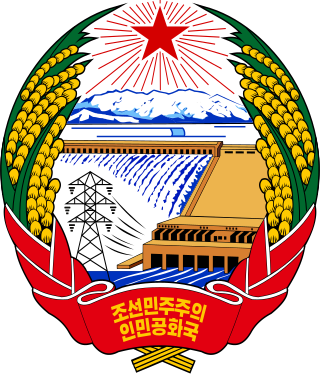
The Secretariat of the Workers' Party of Korea, formerly known as the Executive Policy Bureau (2016–21), manages the work of the Politburo of the Workers' Party of Korea and its Presidium. The General Secretary leads the work of the Secretariat, and the body is composed of several members.
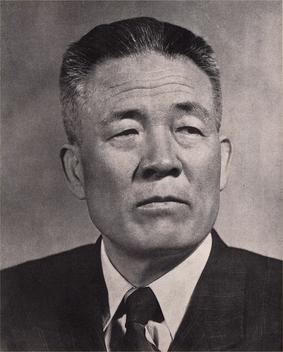
Han Sorya was a Korean writer, literary administrator and politician who spent much of his career in North Korea. Regarded as one of the most important fiction writers in North Korean history, Han also served as head of the Korean Writers' Union and Ministry of Education.
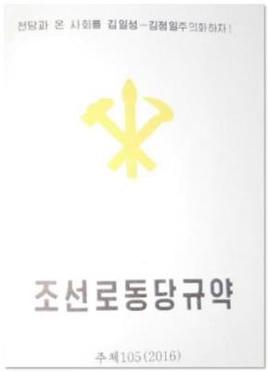
The Rules of the Workers' Party of Korea are the by-laws of the Workers' Party of Korea (WPK). It sets the rules of the organization and membership of the party. According to the rules, the WPK Congress is the highest body of the party and it, along with the WPK Conference, can amend the rules. The rules defines the character, task, and methodology of the party. According to it, the Party strives to impose communism on the whole of the Korean Peninsula. Recent revisions of the rules have defined Kimilsungism–Kimjongilism as the ideology of the party.

Pak Chong-ae, also known as Pak Den-ai, was a North Korean politician.

The Academy of Sciences of the Democratic People's Republic of Korea or State Academy of Sciences, formerly the National Academy of Sciences, is the national academy of sciences of North Korea. It was founded in 1952, and until 1981 was responsible for all research conducted in the country before various organizational reforms and splittings of academies were conducted.

Visual depictions of Kim Il-sung have been commonplace in North Korea since the 1940s following the example of Joseph Stalin in the Soviet Union and Mao Zedong in China. The display of Kim Il-sung portraits was made mandatory at homes in the 1970s. In the past, they were mandatory in certain public places as well, such as factories, airports, railway stations, and rail and subway carriages. At present, they no longer appear in means of transport, not even in some new buildings. Portraits of Kim Jong-il have been hung next to Kim Il-sung since the late 1970s. A portrait of Kim Jong-un was displayed for the first time in public in 2018.
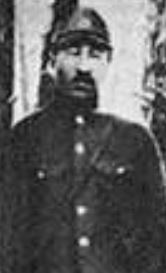
Choe Hyon, also known as Sai Ken, was a North Korean general and politician.

On Eliminating Dogmatism and Formalism and Establishing Juche in Ideological Work, also known as the "Juche speech", was a speech delivered on 28 December 1955 by Kim Il-sung. The address mentioned his Juche ideology by name for the first time. It is considered one of Kim's most important works and a "watershed moment" in North Korean history. Views differ if the speech used the term juche to launch an ideology or more conservatively to assert that the Korean people were the subject of the revolution. The former believes that Juche, as a distinct ideology, was developed by Hwang Jang-yop on his re-discovery of the speech. The speech was published for the first time in 1960 and in many subsequent, heavily edited revisions since.















